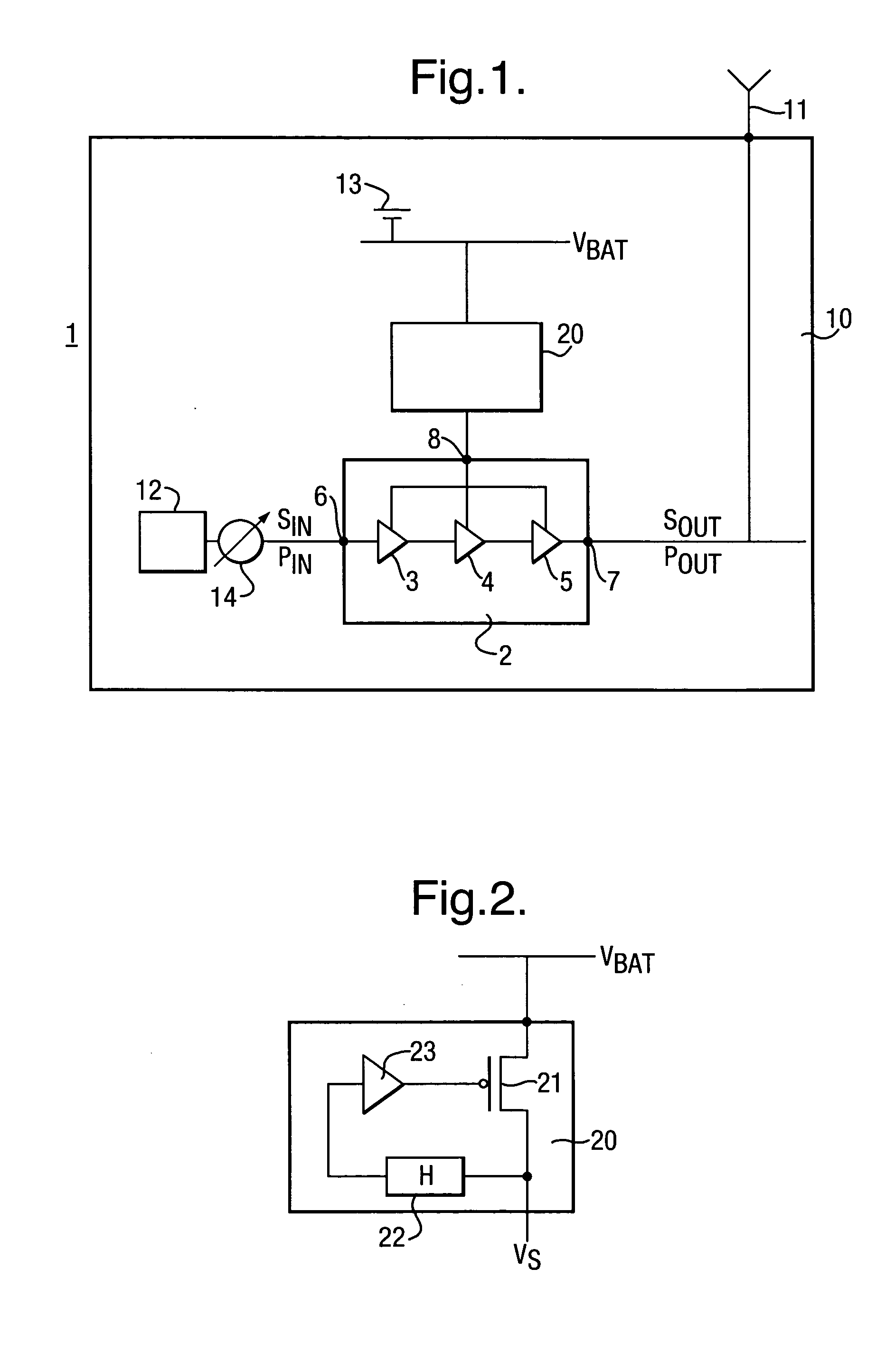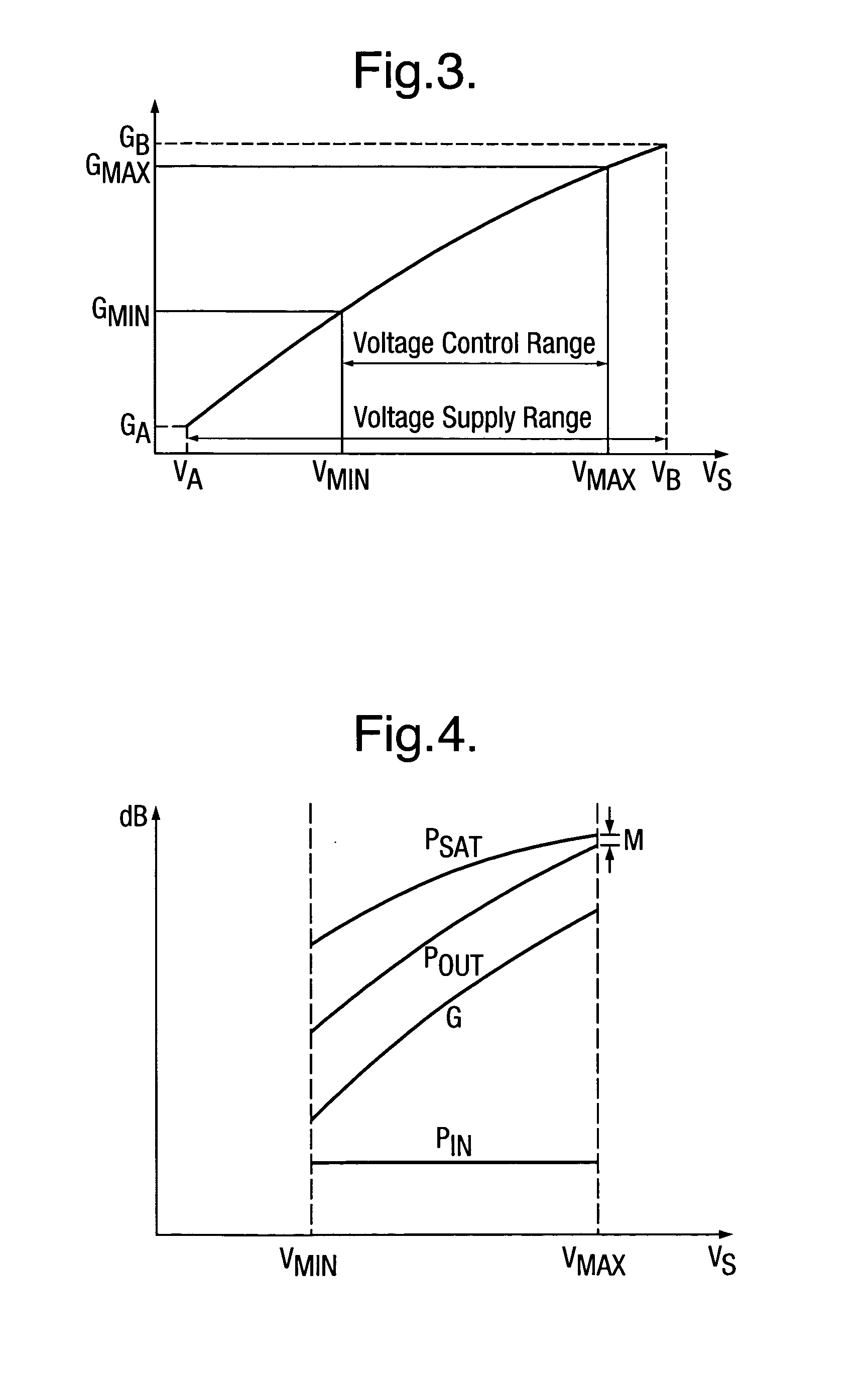Power control of a power amplifier
a power amplifier and power control technology, applied in the direction of rf amplifiers, automatic tone/bandwidth control, gain control, etc., can solve the problems of reducing the efficiency of the power amplifier, so as to prevent the saturation of each amplifier stage, improve efficiency, and limit distortion
- Summary
- Abstract
- Description
- Claims
- Application Information
AI Technical Summary
Benefits of technology
Problems solved by technology
Method used
Image
Examples
Embodiment Construction
[0043] A power amplifier power control circuit 1 which embodies the present invention is shown in FIG. 1. The power amplifier power control circuit 1 has a power amplifier 2 which comprises three amplifier stages 3, 4 and 5 connected in series. An input signal SIN having an input power PIN is supplied to the input 6 of the power amplifier 2. The input signal SIN is amplified successively by the amplifier stages 3, 4 and 5 to produce an output signal SOUT at the output 7 of the power amplifier 2 having an output power POUT.
[0044] The power amplifier power control circuit 1 is provided inside a mobile terminal 10 for use with a wireless communication network. The output signal SOUT is supplied to an antenna 11 of the mobile terminal 10 for transmission. The input signal SIN is generated by the signal processing circuit 12 of the mobile terminal 10 and is modulated in accordance with the variable envelope modulation scheme of the specification of the wireless communication network in ...
PUM
 Login to View More
Login to View More Abstract
Description
Claims
Application Information
 Login to View More
Login to View More - R&D
- Intellectual Property
- Life Sciences
- Materials
- Tech Scout
- Unparalleled Data Quality
- Higher Quality Content
- 60% Fewer Hallucinations
Browse by: Latest US Patents, China's latest patents, Technical Efficacy Thesaurus, Application Domain, Technology Topic, Popular Technical Reports.
© 2025 PatSnap. All rights reserved.Legal|Privacy policy|Modern Slavery Act Transparency Statement|Sitemap|About US| Contact US: help@patsnap.com



